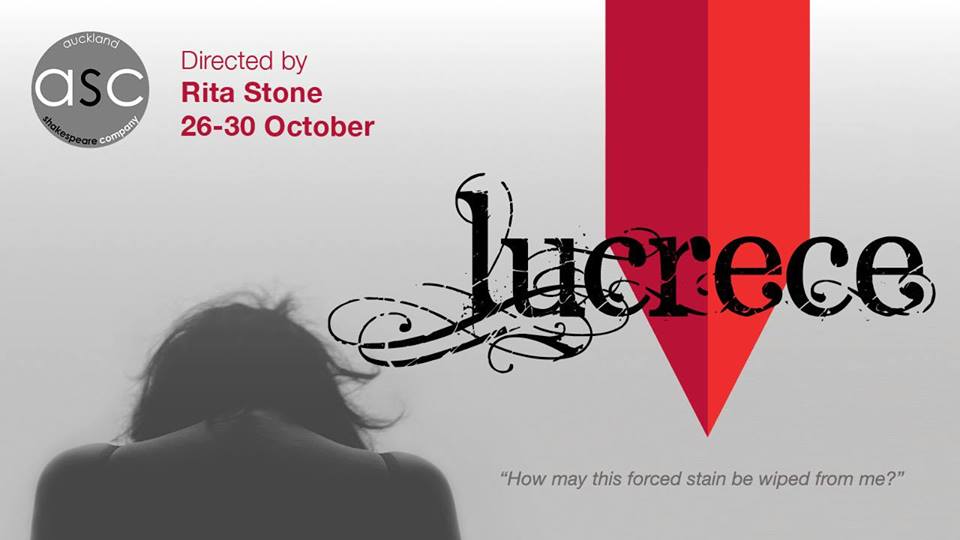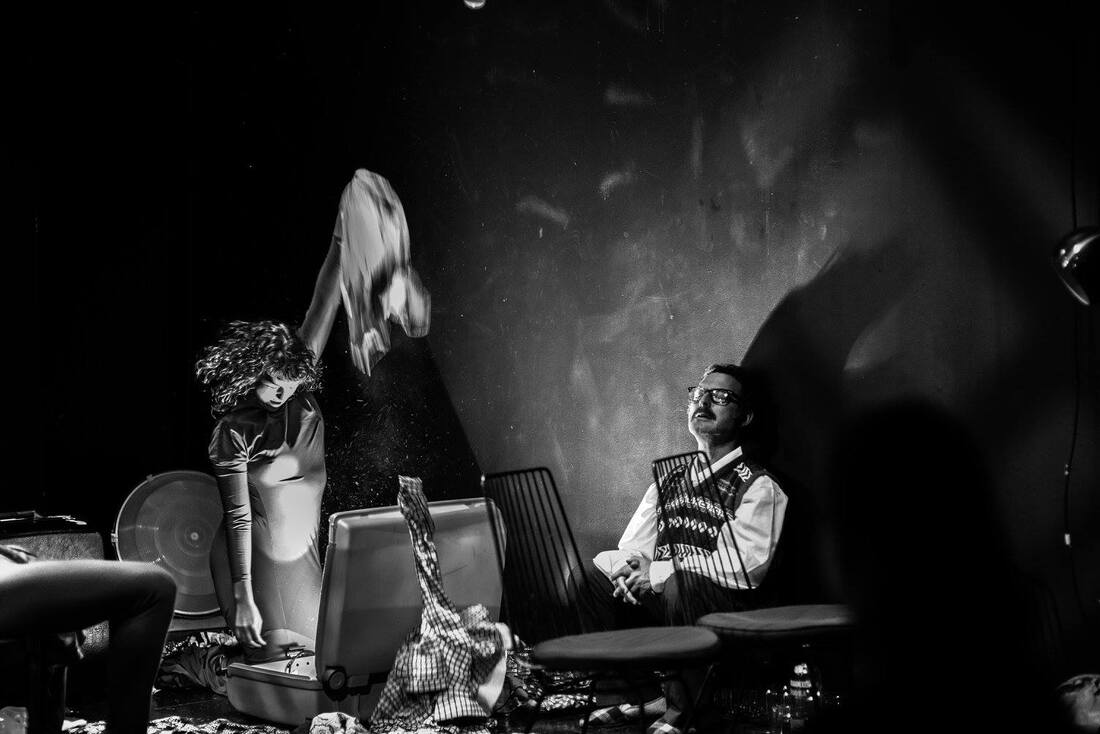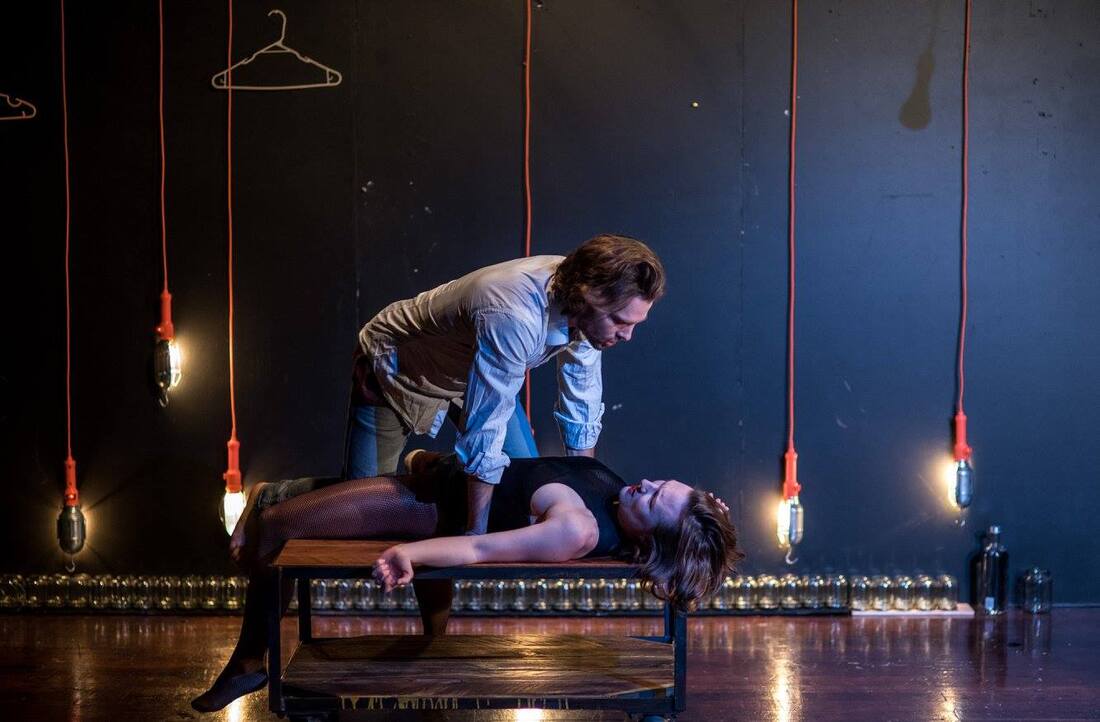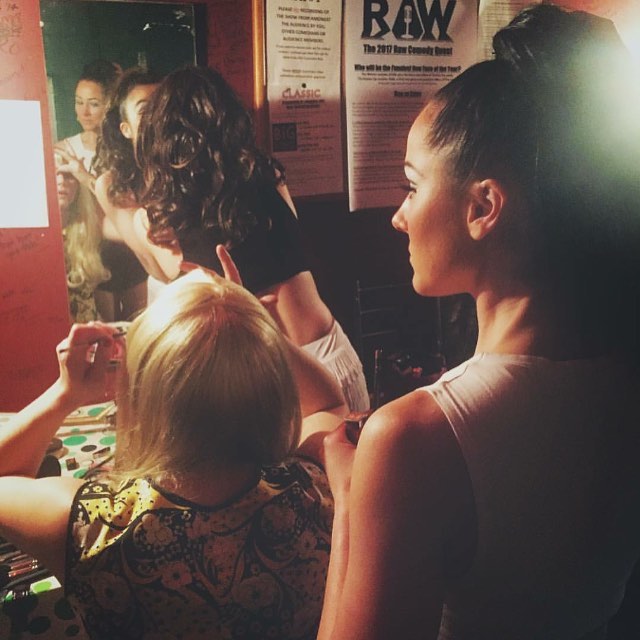Artistic Director Brigitte Knight recently choreographed Lucrece for The Auckland Shakespeare Company, working on movement for both the actors and the Greek chorus.
See Leigh Sykes' full review below (courtesy of Theatre Review).
See Leigh Sykes' full review below (courtesy of Theatre Review).
"As Rita Stone points out in her Director's Notes, “turning a narrative poem into a viable, full-scale theatrical production for four actors and a Greek chorus [is] uncharted territory” but Stone and her team should be congratulated for the fine job they have done in charting the unexplored and creating a satisfying and truly theatrical experience...
The play steps up a gear as Tarquin reaches his decision to give in to his lust and go to Lucrece's chamber to ravish her, while Collatinus and Lucia watch, perched on small platforms suspended from the ropes that frame the space. It strikes me that having these characters suspended above the action in this way hints at voyeurism, but it is also very effective in allowing us to see clearly their responses to the events that unfold; events that they must describe but which they cannot stop.
I particularly like the use of the Chorus in this section. Their masks and sharp, angular movements make them seem very alien and forbidding, as they too try to stop Tarquin's progress towards Lucrece, only to fail. When Tarquin and Lucrece come face to face, the play really takes off, as the characters and the impending events become more real through this dialogue.
Gittins does an admirable job of making Tarquin's battle between self-loathing and resolution believable as he strikes terror into Lucrece, and the poem is mined very skilfully here to give these characters their voices. As Tarquin blames Lucrece's beauty for his actions, I feel many echoes and connections to other Shakespeare plays (Richard III blaming Lady Anne's beauty for the murder of her husband for example), but also to 2016, where so many women are routinely told that they have provoked the monstrous events that have happened to them by the way they have dressed or behaved, and where young women are told that they must take responsibility for not distracting young men by wearing school uniform modestly. This blame culture is insidious, and it is apparent that Shakespeare has been making this plain for over 400 years.
The attack on Lucrece is staged sensitively and effectively, allowing us to focus on the aftermath of the event. Throughout this sequence both Gittins and Hill display a clarity of language and action that supports the narrative well.
The aftermath of the rape continues to resonate with modern circumstances as Lucrece is forced to recount the details of her attack so publicly, before shockingly taking her own life.
Stone's direction of the piece is assured, allowing the language and the performances to breathe, while driving the narrative forward with pace. This is a hugely impressive achievement, creating a dramatic, strong narrative supported by committed performances.
Experiencing this show is an opportunity that should grasped and savoured."
Leigh Sykes, Theatre Review NZ
The play steps up a gear as Tarquin reaches his decision to give in to his lust and go to Lucrece's chamber to ravish her, while Collatinus and Lucia watch, perched on small platforms suspended from the ropes that frame the space. It strikes me that having these characters suspended above the action in this way hints at voyeurism, but it is also very effective in allowing us to see clearly their responses to the events that unfold; events that they must describe but which they cannot stop.
I particularly like the use of the Chorus in this section. Their masks and sharp, angular movements make them seem very alien and forbidding, as they too try to stop Tarquin's progress towards Lucrece, only to fail. When Tarquin and Lucrece come face to face, the play really takes off, as the characters and the impending events become more real through this dialogue.
Gittins does an admirable job of making Tarquin's battle between self-loathing and resolution believable as he strikes terror into Lucrece, and the poem is mined very skilfully here to give these characters their voices. As Tarquin blames Lucrece's beauty for his actions, I feel many echoes and connections to other Shakespeare plays (Richard III blaming Lady Anne's beauty for the murder of her husband for example), but also to 2016, where so many women are routinely told that they have provoked the monstrous events that have happened to them by the way they have dressed or behaved, and where young women are told that they must take responsibility for not distracting young men by wearing school uniform modestly. This blame culture is insidious, and it is apparent that Shakespeare has been making this plain for over 400 years.
The attack on Lucrece is staged sensitively and effectively, allowing us to focus on the aftermath of the event. Throughout this sequence both Gittins and Hill display a clarity of language and action that supports the narrative well.
The aftermath of the rape continues to resonate with modern circumstances as Lucrece is forced to recount the details of her attack so publicly, before shockingly taking her own life.
Stone's direction of the piece is assured, allowing the language and the performances to breathe, while driving the narrative forward with pace. This is a hugely impressive achievement, creating a dramatic, strong narrative supported by committed performances.
Experiencing this show is an opportunity that should grasped and savoured."
Leigh Sykes, Theatre Review NZ










 RSS Feed
RSS Feed
